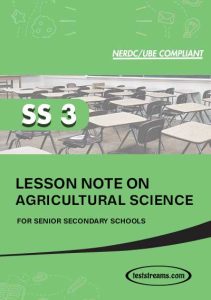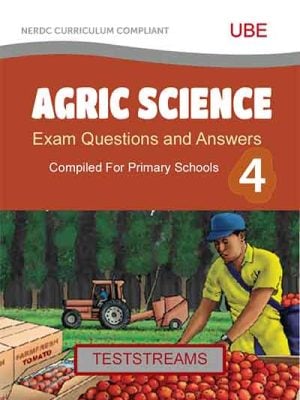This Agriculture Lesson Note was pulled from our book (Lesson Note on AGRICULTURE for SS3 MS-WORD)Compiled to serve as reference material to help teachers draw out their lesson plan easier, saving you valuable time to focus on the core job of teaching.
The Lesson notes are based on the current NERDC curriculum (UBE compliant)[/su_note]
This Agriculture Lesson Note Covers The Following Topics
- ANIMAL NUTRITION (III)
- AGRICULTURAL EXTENSION
- FISH FARMING
- ANIMAL IMPROVEMENT
- AGRICULTURAL FINANCING
- AGRICULTURAL INSURANCE
- IMPORTANCE OF AQUACULTURE
week 1
Malnutrition in Farm Animals
This is a condition in which an animal shows evidence of nutritional deficiency. It occurs when a ration does not supply all the essential nutrients in the right proportion and quantities. It results when an animal takes in insufficient food or it eats diet which is deficient of one or more nutrients like protein, vitamins, minerals e.t.c Malnutrition or malnourishment is a condition that results from eating a diet in which nutrients are either not enough or are too much such that the diet causes health problems. It may involve calories, protein, carbohydrates, vitamins or minerals.
MALNUTRITIONAL DISEASES CAUSES SYMPTOMS CORRECTION Rickets and Osteomalacia Perosis
Lack of calcium, phosphorus, Vitamin D, Lack of chlorine, folic acid, calcium in diet
Flexible and curve bones, soft shell eggs, Chickens lie on their kneels
Add fish meal, bone or oyster shell to feed Add vitamins and B-complex
Pregnancy toxemia Lack of sufficient energy, ketosis Loss of appetite Feed carbohydrate Milk fever Low blood sugar and constipation Loss of appetite, nervousness Feed oyster shell or bone meal Baby pig anaemia Low iron in blood Nervousness, galloping and convulsion Inject animal Iron dextran Night blindness Lack of Vitamin A Inability to see clearly at night Feed with yellow maize Scurvy Lack of vitamin C Lesion around connective tissues Feed animals vegetables and fruits Beri-Beri Lack of vitamin B1 Lack of appetite, fatigue and weight loss Feed animals with yeast, cereals and vegetables MINERAL SOURCES FUNCTIONS DEFICIENCY SYMPTOMS Calcium Bone meal, oyster shell, limestone, milk – Bone and teeth formation – Egg shell formation
– Blood clotting
– Rickets – Osteomalacia
– Soft egg shell
– Retarded growth
Phosphorus Bone meal, dicalcium phosphate, fish meal – Bone and teeth formation – Acid – base balance
– Egg shell formation
– Rickets – Osteomalacia
– Lack of appetite
Magnesium Salk licks, wheat gems, forage, grasses – Aids functioning of the nervous system – Activation of enzymes
– Hyper – irritability – Nervous disorder
Sodium and chlorine Common salt, salt lick and fish meal – Regulates acid base balance – Maintenance of osmotic pressure
– Improves pleasant taste of feed
– Reduced growth and weight – Decline in appetite
Sulphur Salt licks, fish meal Constituents of protein and amino acids like methione Poor growth Iron Yeast, iron injection and salt lick Constituent of haemoglobin in red blood cell and of protein called myoglobuline Anaemia Iodine Iodized salts, fish meal Constituent of hormone called thyroxine Goiter Copper Salt licks Aids formation of haemoglobin and iron absorption Anaemia Fluorine Salt licks, fluorinated water Prevents tooth decay Tooth decay Assessment
- Explain Malnutrition
- What are the deficiencies of the following
– Calcium
– Copper
– Iodine
– Iron
– Sulphur - What are the sources of the minerals mentioned in question 2?

Get the complete Lesson Note with more content at very affordable price. Lesson Note on AGRICULTURE for SS3 MS-WORD- PDF
![]()








